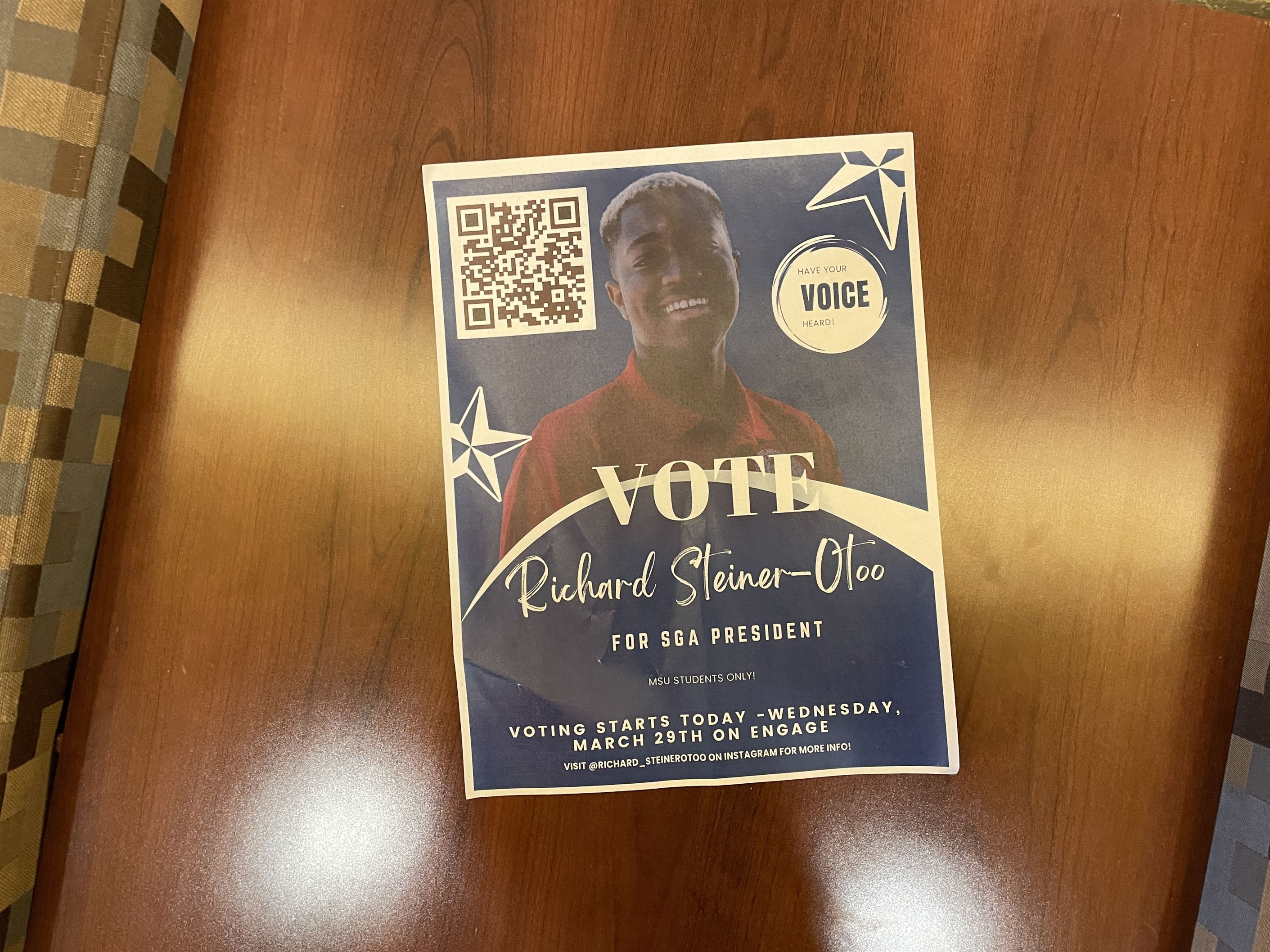For the past few weeks on campus, Montclair State University students have received a ton of information about the Student Government Association (SGA) elections, from emails in their inboxes to slogans written on the pavement to… cookies?
For this year’s SGA executive board elections, the candidates’ campaigns were promoted in different engaging ways, such as through social media posts, flyers, sidewalk chalk and yes, even cookies.
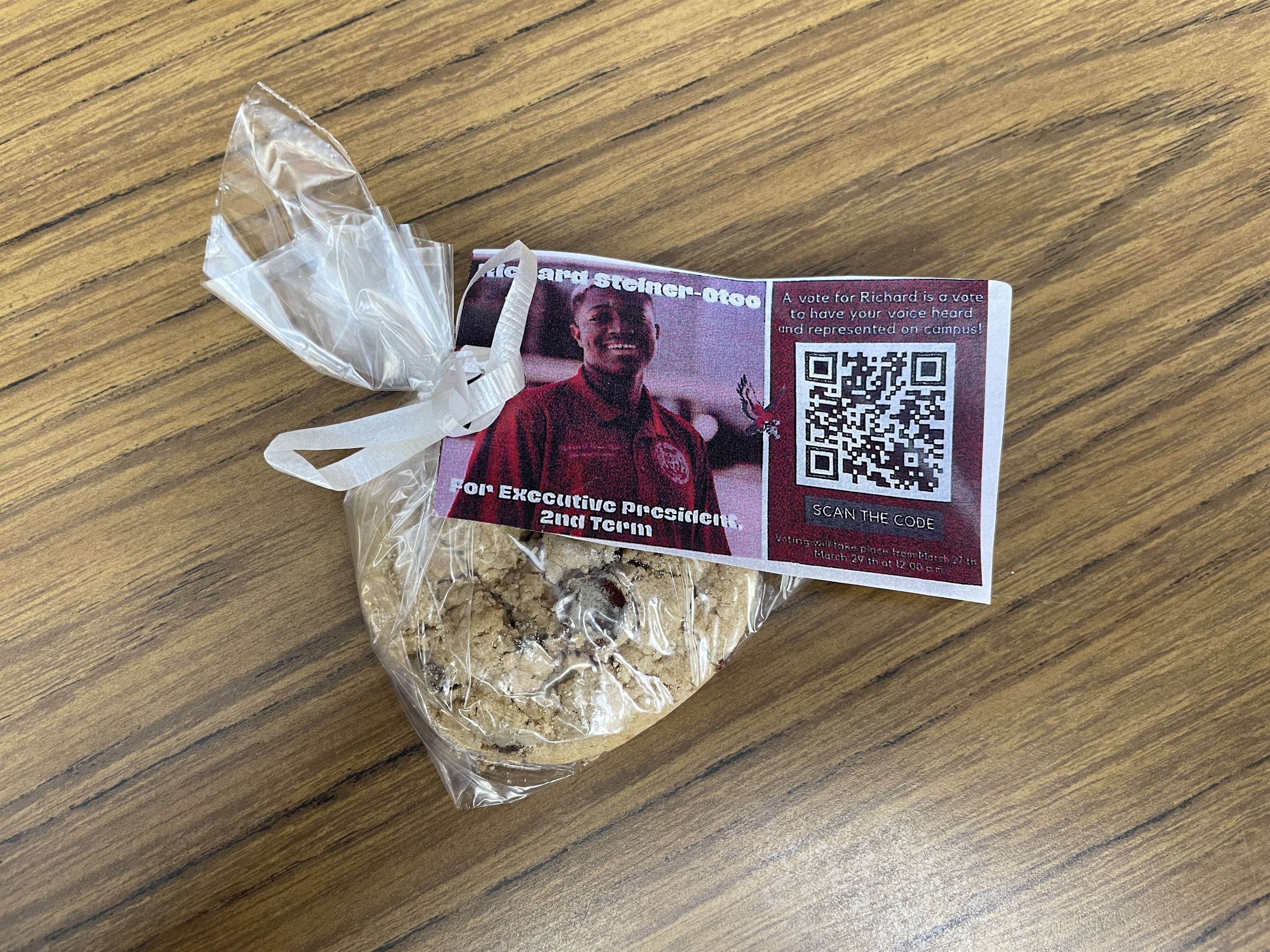
Executive president Richard Steiner-Otoo handed out cookies while speaking with students about running for his second term.
Meagan Kane | The Montclarion
These marketing tactics spark curiosity about how these tools affected the turnout of the election. Bond Benton, associate professor of public relations, shared his thoughts.
“At a broad level, [public relations and advertising] defines the identity of the campaign and it turns the policy and issue statement into a comprehensible story,” Benton said.
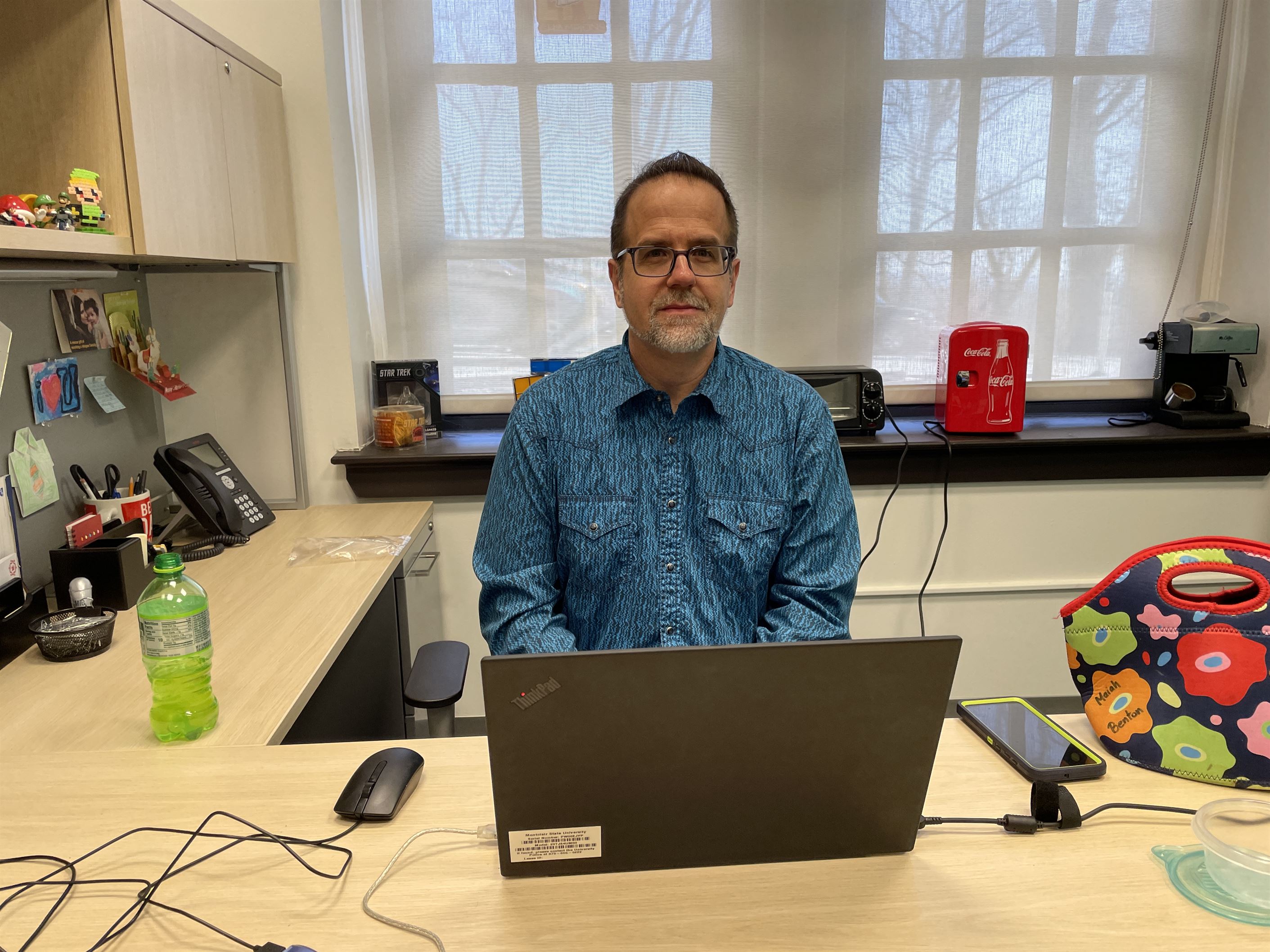
Bond Benton, associate professor of public relations, explained how social media is a helpful tool.
Meagan Kane | The Montclarion
As for the social media side of public relations, Benton believes that it is an imperative tool to use.
“Social media in particular is just so responsive,” Benton said. “If you look at political participation for people under the age of 30, social media interaction is going to be the space where they do most of it.”
Krisha Rana, who won the election for executive secretary, utilized social media platforms such as Instagram and TikTok.
“I made a campaign video,” Rana said. “I posted that on Instagram and TikTok, those were the two platforms I use a lot and I figured it could reach out to more people.”
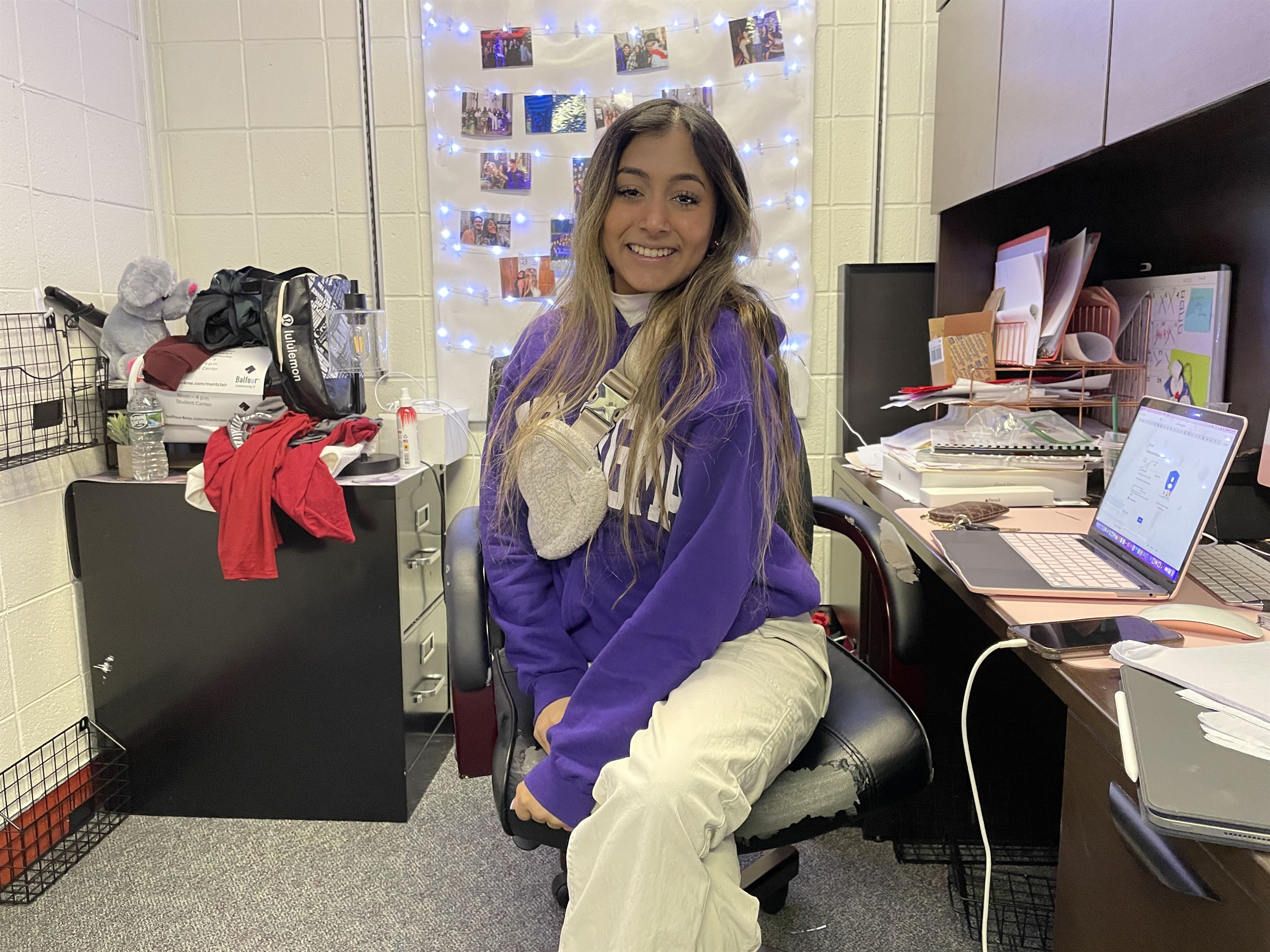
Executive secretary Krisha Rana utilized social media platforms such as Instagram and TikTok.
Meagan Kane | The Montclarion
Richard Steiner-Otoo, who won re-election for executive president, also created a campaign video.
“This year’s [campaign video] had reached 14,800 [people],” Steiner-Otoo said. “I feel like that was really successful.”
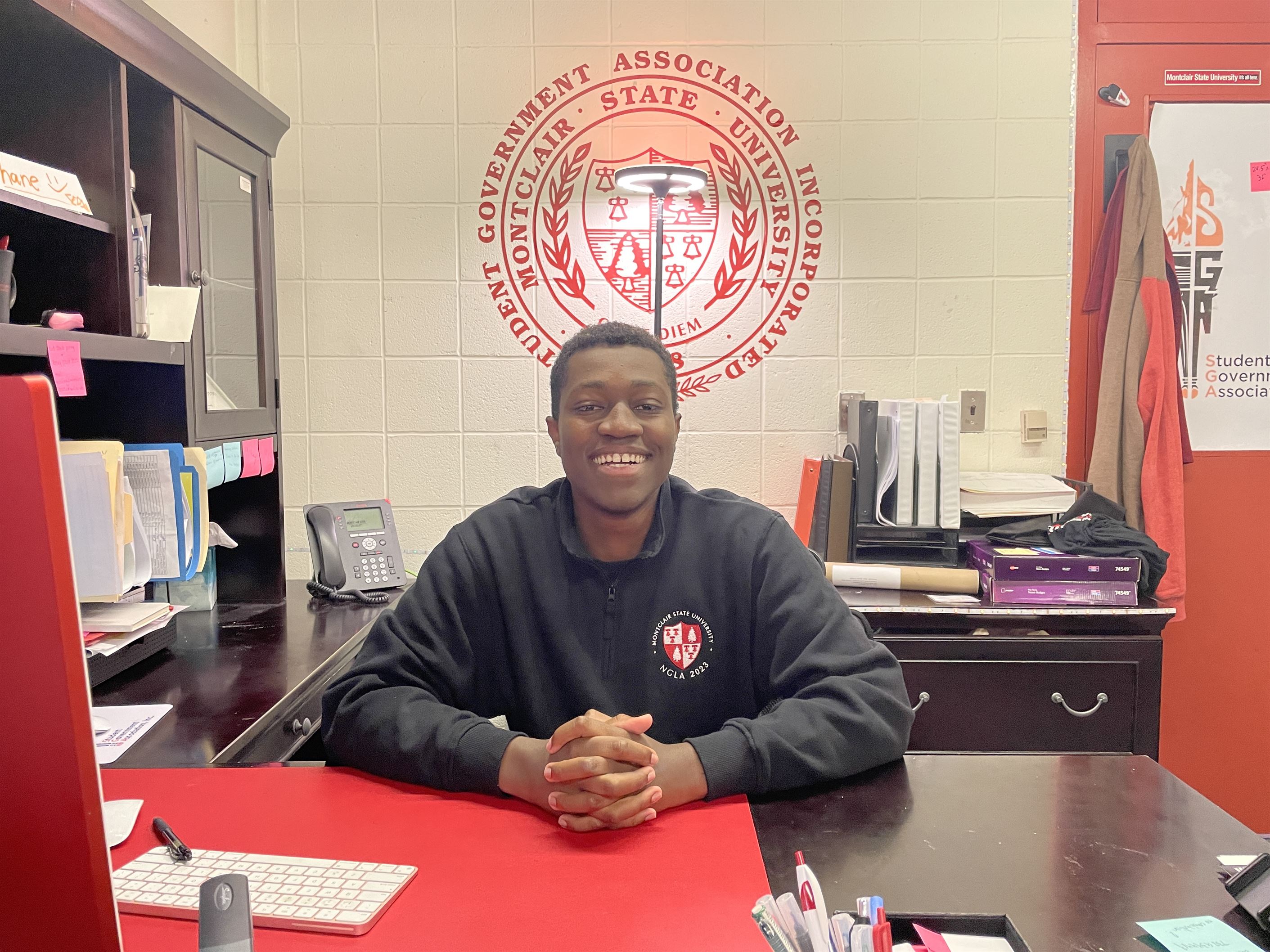
Richard Steiner-Otoo won a second term as executive president.
Meagan Kane | The Montclarion
Mikayla Houston, the winner of the executive vice president election, explained her social media strategy, focusing on Instagram and Snapchat.
“I just made a poster and posted it on social media and people were reposting and spreading the word,” Houston said. “I used Instagram and Snapchat to post my flyers.”
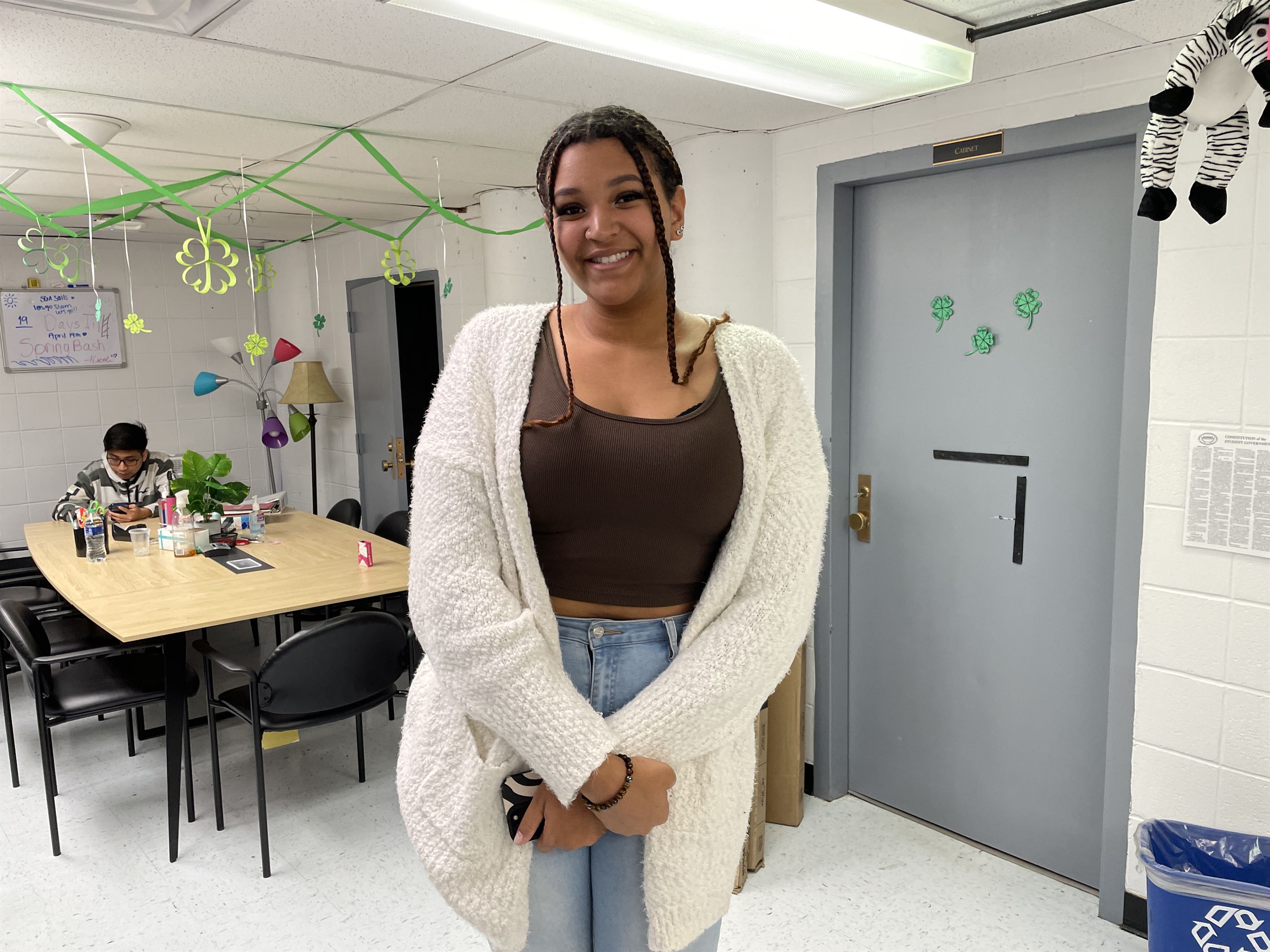
Executive vice president Mikayla Nicole Houston shares her reaction to winning the election.
Meagan Kane | The Montclarion
Another way to win over student voters was by going person-to-person. Candidates had the ability to explain their campaign on a more personal level and express why students should vote for them.
Steiner-Otto gave out cookies with a flyer that included a QR code, which led to his online promotional videos and posts. He explained the impact greeting people in person had.
“Those conversations are so meaningful and impactful, it means a lot more for someone to see a face, to recognize a face and have that be familiar in the future,” Steiner-Otoo said. “Just literally telling students my name, saying that [my name] in itself [as well as] asking them about their lives [and] about their experiences at Montclair [State] is something that I thought was really successful.”
Rana believes going up to students and sharing her reason for running was a plus as well.
“The other part [of promoting] which I think was a huge factor in my campaigning was literally going person-to-person and campaigning,” Rana said.
She explained how campaigning is more than just sharing information on social media.
“Because anyone can obviously watch my [campaign] video and they’ll get to see who I am, but when you actually go in person campaigning to individuals, they understand your message more,” Rana said.
With the help of various forms of campaign marketing, the three winners received a strong turnout.
“We had a bigger turnout this year,” Steiner-Otoo said. “I think in the past two years alone we’ve had over double the number of votes than we used to.”
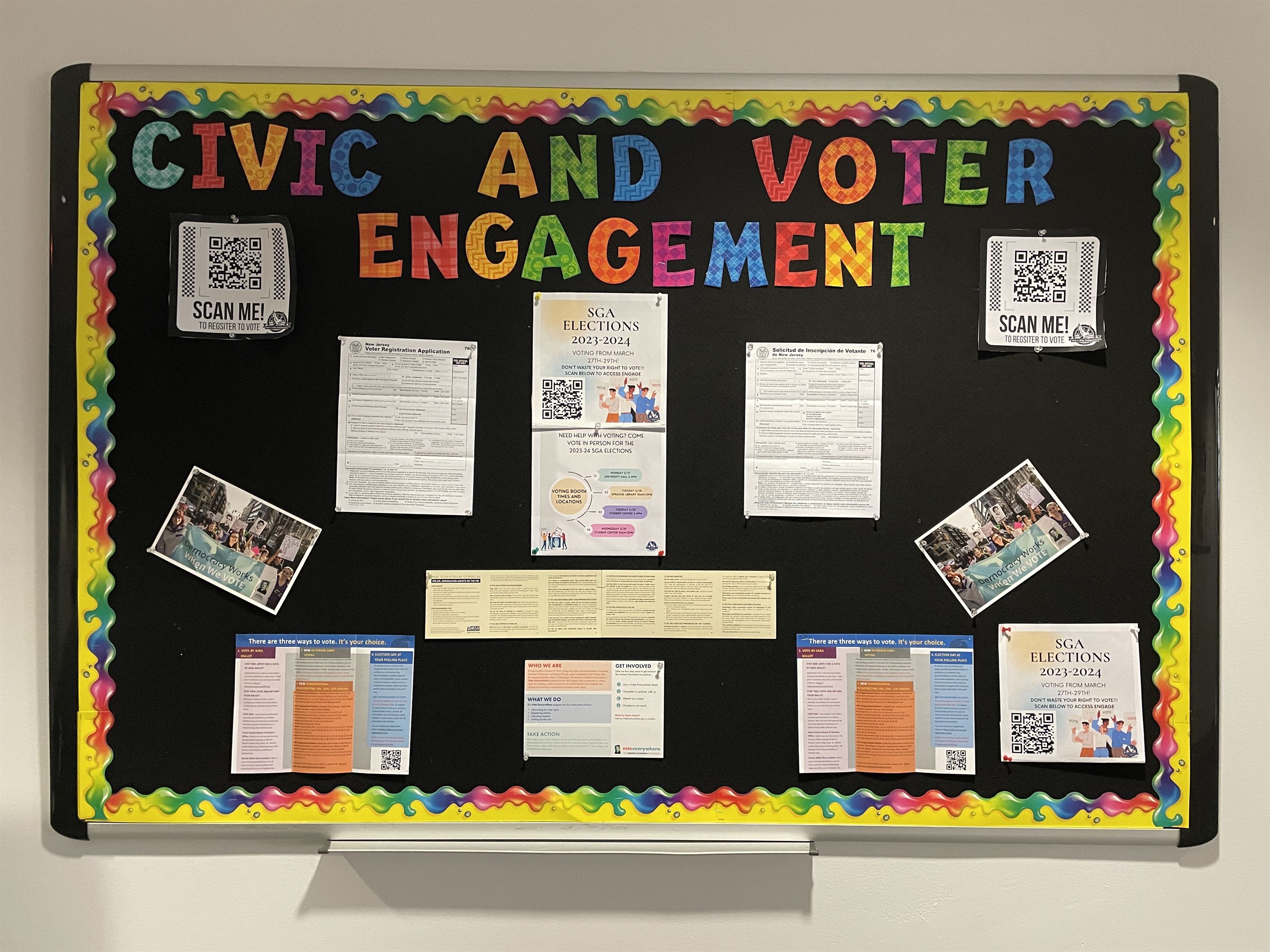
Civic and Voter Engagement bulletin board inside Sprague Library.
Meagan Kane | The Montclarion
With the ongoing growth of the digital era, voting numbers were over the top.
“In years prior, we used to get like 300 to 600 votes, which is very underwhelming,” Steiner-Otoo said. “We tried very hard [this year] to publicize it.”
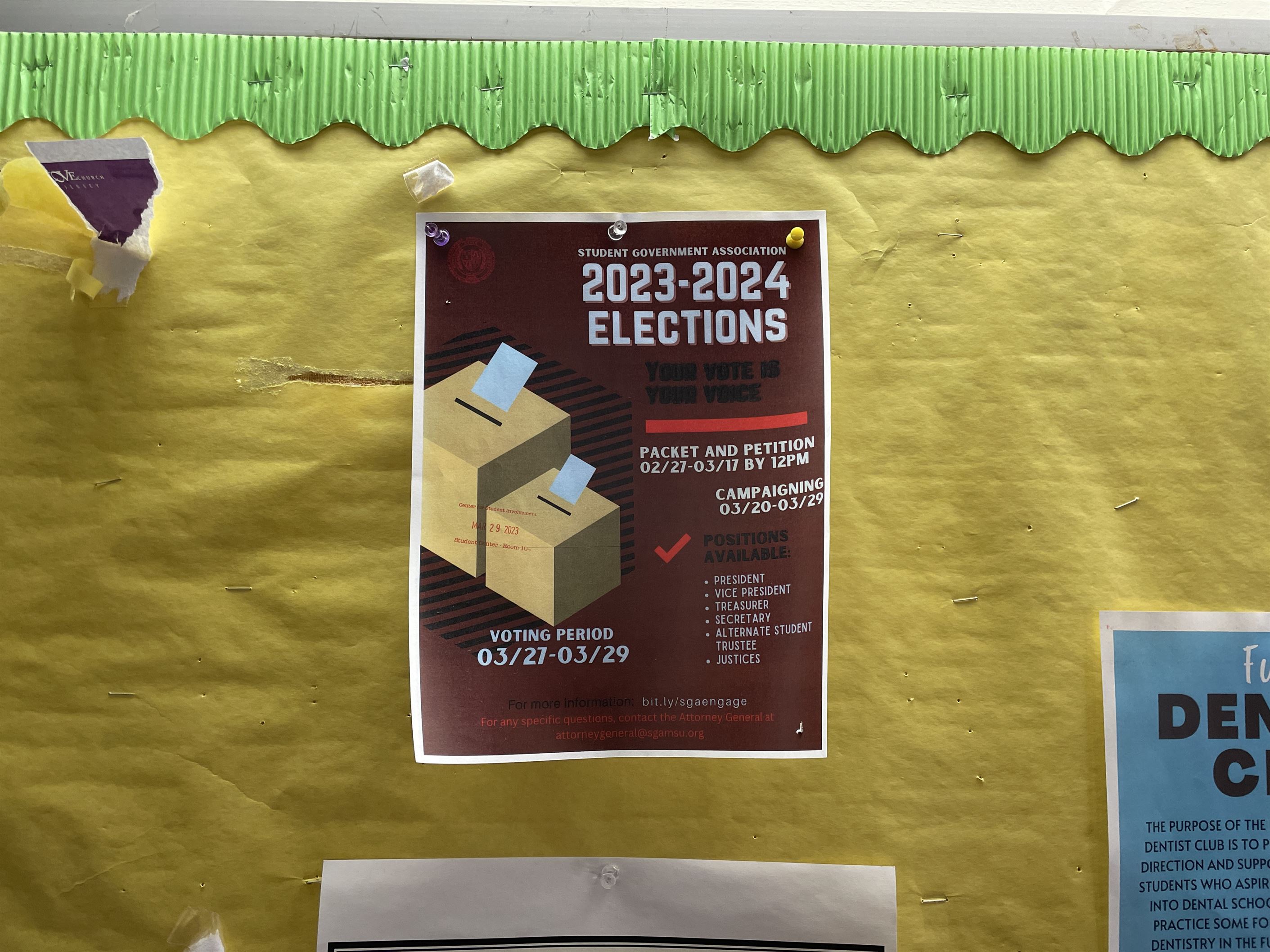
The SGA 2023-2024 elections flyer inside the Student Center Annex.
Meagan Kane | The Montclarion
Luisa Bicalho, the SGA’s attorney general, also believes heavier use of marketing and PR allowed for a stronger campaign than years prior.
“I think this year’s campaigning process was much stronger,” Bicalho said. “I think what made a difference this year was that all of these candidates really wanted the position and so they worked extra hard to showcase that.”
Bicalho expressed how pleased she is with the candidates’ campaigns, especially with marketing themselves.
“All of these candidates did an amazing job at campaigning as I saw them pop up everywhere around campus,” Bicalho said.
Out of close to 18,000 undergraduates within Montclair State, 1,023 voted. Using several techniques to convince students to cast their votes has shown that the numbers can indeed grow higher.
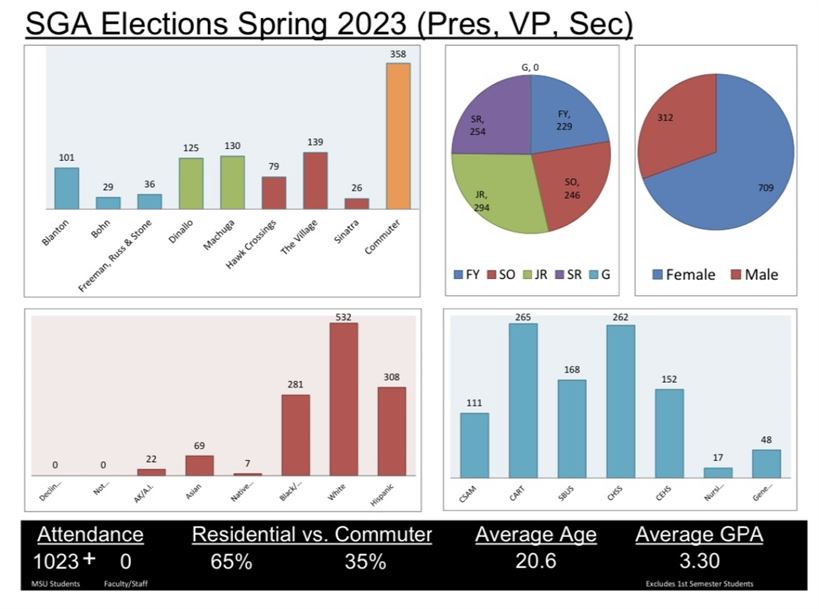
SGA election demographics.
Photo courtesy of Luisa Bicalho
Houston shared her reaction to winning executive vice president.
“I did not feel like it was real,” Houston said. “If you asked me in January or even the beginning of February if I wanted to be [vice president] I would have not had an answer.”
Rana expressed how she felt when she found out she won her second term as executive secretary.
“When I heard my name get announced, I understood that students trusted me and I got my name out there,” Rana said.
Steiner-Otoo is ecstatic to serve on the board for his second term as well.
“I was so excited, my heart was beating out of my chest,” Steiner-Otoo said. “I am so excited to be able to serve our student body again.”

